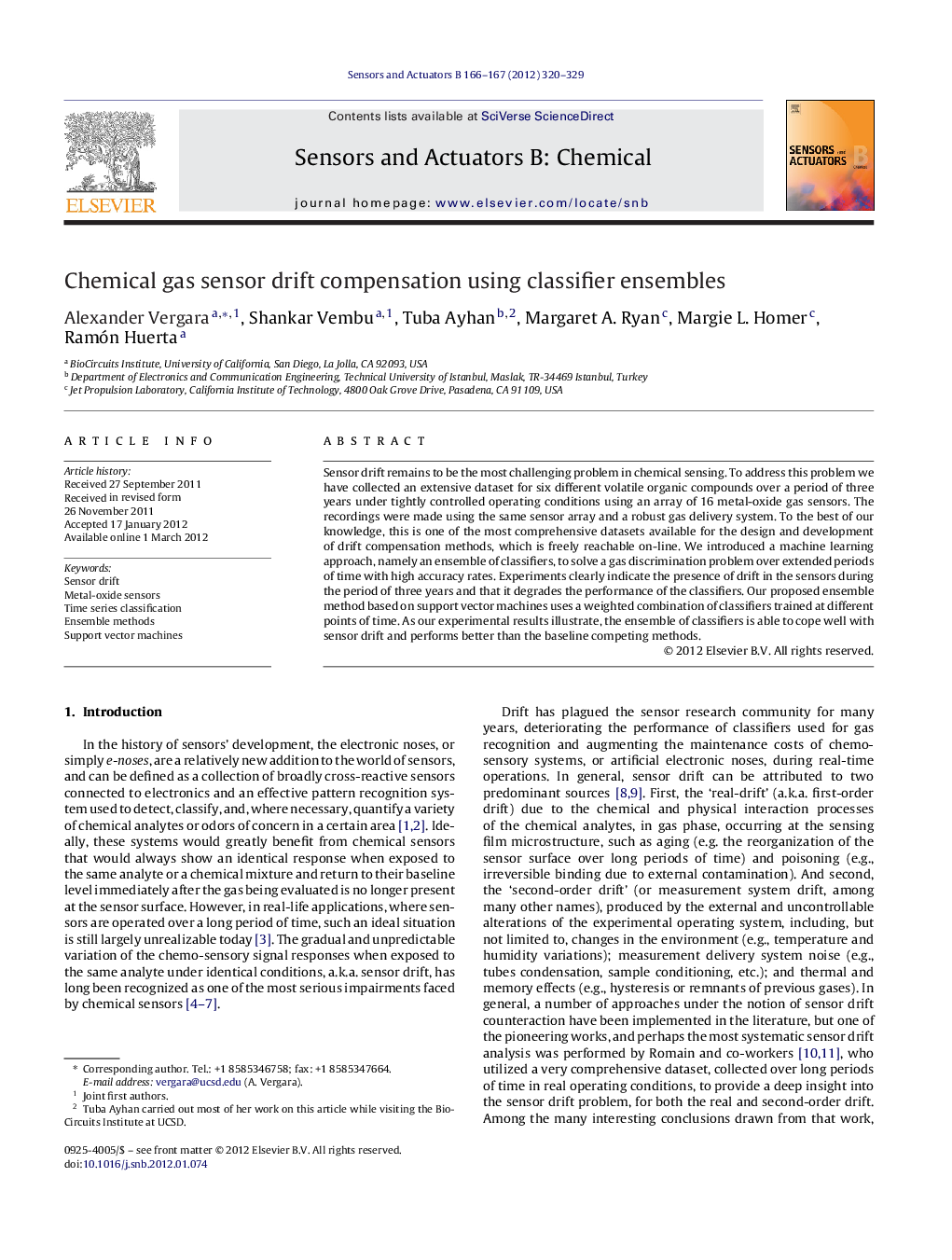| Article ID | Journal | Published Year | Pages | File Type |
|---|---|---|---|---|
| 742584 | Sensors and Actuators B: Chemical | 2012 | 10 Pages |
Sensor drift remains to be the most challenging problem in chemical sensing. To address this problem we have collected an extensive dataset for six different volatile organic compounds over a period of three years under tightly controlled operating conditions using an array of 16 metal-oxide gas sensors. The recordings were made using the same sensor array and a robust gas delivery system. To the best of our knowledge, this is one of the most comprehensive datasets available for the design and development of drift compensation methods, which is freely reachable on-line. We introduced a machine learning approach, namely an ensemble of classifiers, to solve a gas discrimination problem over extended periods of time with high accuracy rates. Experiments clearly indicate the presence of drift in the sensors during the period of three years and that it degrades the performance of the classifiers. Our proposed ensemble method based on support vector machines uses a weighted combination of classifiers trained at different points of time. As our experimental results illustrate, the ensemble of classifiers is able to cope well with sensor drift and performs better than the baseline competing methods.
